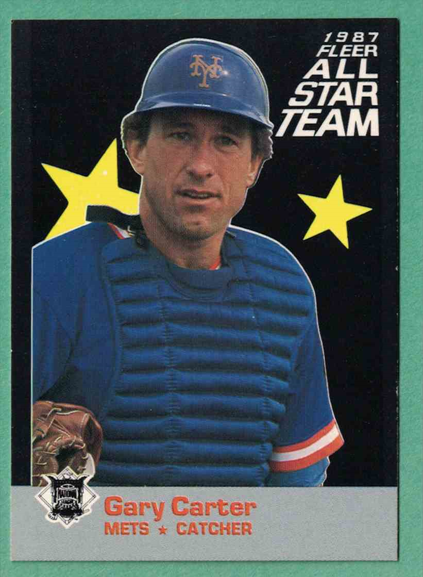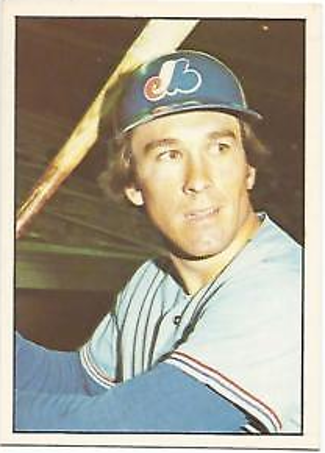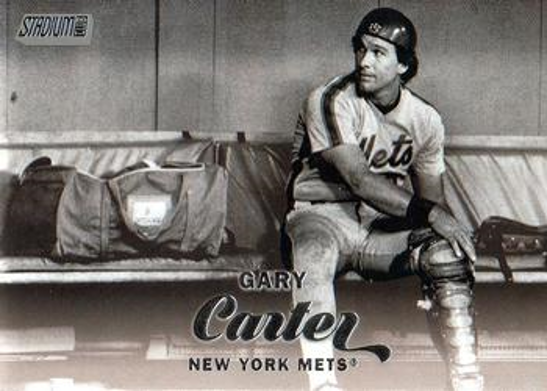Best Cards: Gary Carter
What do you suppose was the peak age of baseball cards? Ones from the ‘50s and ‘60s are the most valuable now. I would wager the highest raw total of people collected in the 1980s. The cards definitely hit their coolest looks in the early 2000s.
Ultimately, the answer to my opening question is rhetorical. The peak age of baseball cards is probably going to be whatever years the person answering the question was 12 years old. As it is with so many things, really.
Players from the black-and-white era had a few dozen cards. Boring (relatively speaking). Starting around the ‘80s, though? If your career lasted more than 2-3 years, your card catalog rivaled the Dewey Decimal System.
It’s hard to watch TV these days. With an ever-increasing number of channels and streaming services, you could do nothing but watch new, scripted TV, dawn to dusk, and you’d still fall behind. Collecting baseball cards became the same. I once had every single Will Clark card ever made. Then there became inserts, subsets, memorabilia cards, 1-of-1s. I had no choice but to give up.
But even if you can’t watch every TV show, you still read Alan Sepinwall to know which are the best, which you should make a point to get to. And even if you can’t reasonably look at every single baseball card a player has, it’s fun to know which is his best.
Inspired by this Rob Neyer tweet, now we have a goal: The best card for each player. Not the most valuable — that’s easy to find — but the best. That can mean attractiveness, significance, cleverness — really, it’s whatever I want it to mean with a given player — but each week we’re going to pick a player, trek through as many of his cards as I can find (thank you, Check Out My Cards), talk about some honorable mentions, and settle on one best card.
(Want to contribute to me doing this? Join the Patreon!)
We start with Gary Carter:
Gary Carter
Career: 1974-1992 (MON, NYM, SFG, LAD)
WAR: 70.1
Hall of Fame: 2003
Gary Carter’s career came about when we had a bajillion and seven cheap card sets published (you have 14 identical 1988 Donruss Don Aase cards propping up your coffee table right now), but he retired before the subsets really took off. On the other hand, he was good enough that they just kept making Gary Carter cards.
The worst Gary Carter card
1987 Fleer All-Star Team #2
Okay, listen, I understand that our technological capabilities in 2020 are miles ahead of where they were in the ‘80s. But the level of phoning this in is extra. The sliced-off left side. A couple random stars in the background. The almost-but-not-quite Star Wars-ian text scroll. The photo choice that just screams “Yeah this is the first photo we found.” Fleer was never our best card company. This … well, they did improve from this.
Honorable mention
These aren’t the best of his cards. Sometimes they aren’t even that good. But they need to be mentioned one way or another.
1976 SSPC #334
“Okay Gary, we’re going to have you stand right in front of the dugout like that’s a natural place to be. And then we’re going to shine the brightest light in the world right in your face from about … whaddya say, Tim, 10 inches? Yeah, 10 inches. Thanks.”
2017 Topps Stadium Club Black Foil #185
I’m kinda loathe to include modern cards of not-modern players in this, because, well, they can step back and take their time and find just the right shot, and comparing that to some dude developing photos in a darkroom 30 years ago doesn’t seem fair. So this one gets honorable mention, but danged if it isn’t just gorgeous. This might very well be Carter’s prettiest card, even if its relative newness disqualifies it from being his best.
2001 Upper Deck Gold Glove – Jersey Card #GG-GC
And here’s the flip side of the “newer cards are prettier” argument. They had however long they wanted to make this card, and they choose one that highlights his receding hairline, and he’s not even holding the baseball? Yes, thanks for featuring how good a fielder he is by showing him clearly not making the play. Please show Rickey Henderson getting caught stealing next.
1994 Ted Williams Card Company #136
Screenshot-from-a-Netflix-true-crime-documentary-lookin’ ass card.
2017 Topps Museum Collection – Canvas Collection #CCR-GC
Forever answering the question, “What would Gary Carter look like if he were having an allergic reaction while you let a 7-year-old draw him?”
1990 Mother’s Cookies San Francisco Giants – Stadium Giveaway #3
Thoughts:
“Cousin Larry from Perfect Strangers as a baseball player.”
This was near the end of Carter’s career, and you can totally tell he’s just excited to have a roster spot.
Do you remember Mother’s Cookies cards? They were ever-so-slightly bigger than regular cards. Not like Bowman cards, which were clearly oversized, but just barely wider. And also flimsier. If you tried to put them in a sleeve, you’d have to bend them just a little. It was awful. I hope your cookies were good, Mother, because your cards blew.
And now, we count down the top four Gary Carter cards of all time. According to me.
4. 1989 Topps Big #325
If you ask me this again next week, I might put this card on the worst list. I’ve never been sure what I think of the cartoons on the back of the Topps Big cards. Some of the cartoons were downright abysmal, the “puns” were barely even sentences, and the stats they pulled for some of the guys were ludicrous. That said, they get considerable credit for trying something different. Without going through the history, I would wager this was the first card to put any fielding numbers on a card, even as rudimentary as the stats they had at the time were.
The card set at large gets demerits for being “Big,” for no reason whatsoever, but if you can look past that, the image of Carter’s smile, his Mets tenure, and that swing — not a typical swing, but Carter-esque — just works on the front.
3. 1993 Upper Deck #219
I have always loved this card for no other reason than they decided to use two different photos of the same dang play on the front and back. It’s like the photographer waited until Montreal came to San Francisco, took pictures for one inning, and called it done.
Which doesn’t mean these aren’t great photos. It’s a fun play, and a unique way to see a player. (And shout out to anyone unfamiliar with the card companies who sees this card and wonders “What’s ‘Up Erdeck’?”)
2. 1977 Topps #295
If you told someone today to draw you an exact mockup of what a baseball card probably looked like in 1977, this is what you’d get back. Again, not a criticism! But unlike later-era Gary, with the curly Mr. Kotter head, this appears to be straighter, more bowl-cutty. And when someone mentions Gary Carter, what comes to mind? In some order, “catcher” and “smile.” Here, have ‘em both.
And the best Gary Carter card of all time …
1. 1991 Studio #182
I literally, right as I wrote this, just realized for the first time I can remember that this card set is called “Studio” and they used pictures from a studio shoot instead of game action. Did we all know this? Was I just stupid for 27 years? It’s all very mind-explodey.
Anyway, Gary Carter entered Major League Baseball in 1974. He was a runner-up for Rookie of the Year in 1975, got MVP votes seven times — finishing as high as second in 1980 — won three Gold Gloves, five Silver Sluggers, and made 11 All-Star teams. Heading into 1991, he was 37 years old, with 313 home runs, and joining a Dodgers team as his Hall of Fame career neared its end. He wasn’t awful that year, playing 101 games and putting up 1.2 bWAR, but he definitely wasn’t Gary Carter anymore, either. In fact, he hadn’t been in a while. That famous 1986 Mets season was his last year topping 1.8 bWAR, his last year as an actual star. He was just a veteran playing out the string, one year before his final reunion hurrah in Montreal. He would make the Hall of Fame eventually, but it took longer than it should have. On the flip side, Gary Carter died in 2012 at the age of 57, far sooner than that should have come, a victim of brain cancer (incidentally, the same brain cancer that killed my grandfather).
At the time of this studio (snicker) shoot, he didn’t know any of that last stuff, of course. But he did know he was nearing the end of his career, and he did know he wasn’t the catcher he had once been.
But you can’t see any trace of that in his smile. Not in that smile. Not in the best smile baseball ever saw.










